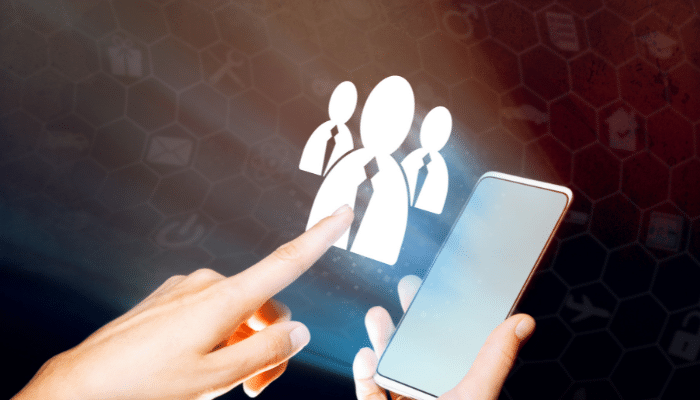As the years go by, our relationship with technology changes. Emerging techs like artificial intelligence can assist human resources to empower their workforce. This makes annual team assessment effective and less stressful and gives optimal results to understand what’s next and how to bring improvements.
Gartner forecasted how artificial intelligence is to pick up speed, with a 21.3% of growth rate in 2022 than 2021.
What is an AI Performance Review?
AI Performance Review is a modern approach to employee evaluations that leverages artificial intelligence technology to assess and analyze an employee’s performance. It involves using AI algorithms to gather and analyze data from various sources, such as work productivity metrics, feedback from colleagues, and self-assessments.
The AI system provides more objective and data-driven insights, enabling organizations to make informed decisions about employee development, recognition, and talent management. AI Performance Review and feedback help streamline the review process, remove biases, and enhance the accuracy and fairness of performance evaluations.
Also Read: Problems with Annual Performance Reviews
Benefits of Using AI for Performance Reviews
AI can track employee performance and assess the need for improvement. Let’s delve deeper into the benefits of the use of AI in performance reviews.

1. Automated reviews
Business leaders prefer AI-driven performance reviews as they allow them to focus on factual details. It is required to produce performance reports. The employees don’t need to collaborate; the AI software is suitable for effective performance management. The ROI on performance management shows the benefits of using AI in reviews. Discover how Engagedly’s AI-powered platform streamlines HR processes, elevates performance outcomes, and enhances every stage of the employee lifecycle.
2. No human intervention required
Chances of human errors were high in conventional performance reviews when managers mostly depended on trusted feedback from team leaders. This can break or make an individual’s career. From rating to suggesting training courses, the managers take up a lot of effort. Doing this for a large group can be taxing and increases the chance of human error, and things like personal bias, incomplete data, and favoritism can interrupt the appraisal.
AI in performance management has no personal connection and helps create analytical reports based on the data collected.
3. Real-time analysis and assessment
The shift from periodical performance appraisal to continuous reviews offers benefits. Now, performance can be continuously improved and corrected, and the organization can become flexible and alert.
The digital power of AI helps capture continuous data from various sources like communication among employees. This is where the system can show real-time insights into an individual’s performance and managers can give instant and constructive feedback. It saves time and effort to frame periodic reviews, where employees must recall and verify details from sources.
4. Solving bias or exacerbating it
It is time to let go of the age-old prejudices when managers often get biased toward an employee. This is what AI can avoid and keep away from biases, ensuring equality. AI keeps away prejudices based on ethnicity, nationality, age, race, and others and offers equal opportunities. See how Engagedly brings AI into core people operations to simplify workflows, support data-informed decisions, and optimize talent management.
Human nature might get directed, resulting in biased behavior, unlike machines that follow a direct path. So, artificial intelligence and machine learning can create an unbiased environment that can provide equal opportunities while appraising or giving promotions.
Also Read: 5 Performance Management Biases to Avoid
5. Identifying incompetence and making improvements
To identify incompetence and make improvements, an organization should focus on creating a collaborative workspace. It should promote teamwork, regardless of bias or hierarchy. Though technology will improve and speed up HR management, human interventions can help build ideas and campaigns and reach customers to maintain a real connection with them.
AI and data are valuable company assets, and AI in performance management will give leaders more time to invest in core business functions and develop new ideas. It can further help individuals have a realistic timeline and set achievable goals to meet deadlines. It should show in individual performance and help boost productivity.
AI can further help in the predictive appraisal so that there is no unfair practice or emotional decision-making. Unfair treatment can be caused by emotional instability, and AI software can remove that.
6. Training and developing improvements
Managers should know how to identify the gaps between talent tools and arrange for personalized training. It can help individuals analyze their career progression through the effective use of performance reviews and hone skill sets. Managers need to identify employee competency and not miss any scope for improvement that directly impacts an individual’s performance. Having AI can help identify an employee’s performance that needs improvement. AI technology in learning programs enables fast learning.
7. Higher employee engagement
A continuous performance review can help AI conduct frequent surveys and get real-time feedback. It can also offer personalized insights to employees with the help of surveys in self-evaluation. This is how management can help employees promote engagement and get a clear picture of the daily achievement of individuals and teams. AI can unveil an individual’s potential and predict one’s future performance level.
Also Read: Best Employee Engagement Strategies for a Better Workplace
Emerging Practices & Trends in AI-Powered Performance Reviews
As more organizations start to adopt AI in performance reviews, here are some practices now becoming common:
- Including AI usage / AI competency as part of evaluation metrics
Some companies are now evaluating not just what employees achieve, but how well they leverage AI tools — for example, problem-solving efficiency, innovation when using AI, or ability to collaborate with AI. Failure to adapt here may mean lower performance ratings. (BCG is one example where core competencies now include AI usage.) - Hybrid review systems combining AI insights + human judgement
Best practices involve using AI for data-driven suggestions (e.g. identifying patterns, anomalies, potential biases), but always pairing these with human context, manager feedback, and qualitative inputs. - Regular calibrations & audit of AI tools
Organizations are scheduling regular audits to check for bias, drift, fairness, and accuracy of AI models used in reviews. Tools must be re-evaluated periodically so they don’t embed outdated norms. - Transparency & feedback loops with employees
Employees are being given clearer visibility into how AI is contributing to their reviews: what data is used, how decisions are made, and an opportunity to challenge or clarify AI-derived feedback. - Tailored training for reviewers & employees on AI literacy
Many employees/managers may not understand what AI can and cannot do; training helps everyone use tools more effectively, avoid over-reliance, and maintain trust.
Additional Risks & Challenges to Be Aware of in 2025
Along with the usual concerns, here are some newer or sharper challenges organizations must handle carefully:
- Bias in AI training data & “invisible” inequalities
AI models may inherit bias from historical performance data, which may reflect past discrimination, uneven opportunity, or unequal resource access. If not corrected, this perpetuates unfair evaluations. - Digital divide / varying AI access & skill levels
Employees differ in access to tools, familiarity with AI, comfort with technology. Performance systems that assume equal AI usage can penalize those less exposed or less tech-savvy. - Opacity / “Black box” models
When AI tools provide feedback or suggestions without explainable rationale, employees may distrust the process or feel decisions are arbitrary. - Privacy, data use, regulation & compliance
As reviews involve potentially sensitive personal data and automated decision-making, organizations must ensure they comply with data protection laws (e.g. GDPR, or any local jurisdiction), respect privacy, limit what data is collected, make consent clear, and secure the data. - Over-reliance & dehumanization
If managers rely too much on AI, performance reviews can become impersonal or fail to account for soft skills, human nuances, or contextual challenges. - Employee sentiment, trust, fairness perceptions
Even if technically fair, if employees feel the AI system is opaque, unfair, or biased, this can damage engagement and trust. Perception matters almost as much as reality. - Model drift & outdated norms
AI models trained on older data may fail to reflect current performance standards, organizational culture, or evolving business goals. Without periodic updating, the AI component could misalign with what managers expect today.
Managers can win with – Intuition and AI Tech
AI alone cannot be enough to derive the best results. Managers working with multiple employees know an individual better and help perform at an optimum. Human knowledge can be strengthened with AI to help an individual improve accuracy and have greater foresight into performance.
The use of AI-driven performance reviews is the new trend preferred across industries. If organizations are to focus on employee performance and satisfaction, this performance feedback is integral.
Why is the market for AI-powered performance reviews progressing?
AI-powered performance assessment takes place in real time, and the progress scale is well evaluated. As it happens in a real-time scenario, it introduces incentives with positive enforcement and alerts the leaders regarding the performance scale. Most top companies are deploying a continuous feedback strategy that has reduced turnover.
Even the HR management team gets continuous feedback on performance and context-specific performance, depending on specific projects an individual works on.
Also Read: Continuous Feedback and Its Benefits
Executives already using AI performance management tools can combine the results of the tools with personalized oversight. Therefore, the combination augments employee efficiency and productivity without replacing it.

Looking Forward: Evolving with AI, Not Being Overtaken
Incorporating AI into performance reviews isn’t an endpoint—it’s an ongoing journey. As AI capabilities evolve, and as norms, laws, and employee expectations shift, organizations need to revisit their policies, models, and practices regularly.
The goal should be to build a system that augments human judgement, maintains fairness, earns trust, and supports continuous growth—not just efficiency. The companies that succeed will be those that treat AI as a partner in performance, rather than a replacement for human oversight.
Frequently Asked Questions
Q1. How can AI make a team productive?
Ans. Artificial intelligence is one of the effective tools to boost team productivity and efficiency. Regardless of the industry, there are repetitive tasks, and AI can handle them better. It is one of the major reasons companies have started infusing this tech into existing infrastructure. It helps boost customer experience and reduce the chance of human errors in daily activities.
Q2. How does AI in performance reviews help?
Ans. AI-driven performance reviews revolutionize traditional evaluations, providing objective, data-driven assessments, eliminating biases, and offering real-time feedback for personalized development. Automating the process saves time, identifies patterns, and fosters a culture of accountability and recognition, benefiting employees and organizations.
Q3. How is AI an essential aspect of a performance review system?
Ans. It is about collecting vast data about individuals, as data collection is vital in reviewing. The key to the performance management system is to analyze things from various perspectives and anticipate what can come out of the reviewing process.















































